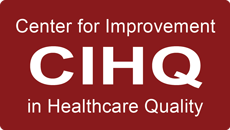Safety & Spirit: Navigating Decorations in Healthcare Facilities
The desire to brighten a healthcare environment with decorations—whether for a holiday, a special event, or year-round visual comfort—is understandable and often encouraged for patient and resident well-being. However, in Texas healthcare facilities, this simple act is governed by a critical network of rules from the Centers for Medicare & Medicaid Services (CMS), state regulators like the Texas Health and Human Services (HHSC) / Texas DSHS, and accreditation organizations like CIHQ.
The guiding principle across all these bodies is Life Safety, primarily concerned with fire prevention and patient safety.
Here is a breakdown of the key rules and best practices for decorations in hospitals, nursing homes, and other regulated facilities:
The Paramount Rule: Fire Safety & The Life Safety Code (NFPA 101)
Federal rules (CMS) and state licensing standards often mandate compliance with the National Fire Protection Association (NFPA) 101, Life Safety Code (LSC), specifically the 2012 edition. This code forms the backbone of decoration rules.
| Areas of Concern | Key Requirement (Based on NFPA 101 & CMS) |
|---|---|
| Combustible Materials | Decorations must be flame-retardant or in limited quantities that do not pose a fire hazard. |
| Quantity Limits | In fully sprinklered smoke compartments: Decorations typically cannot exceed 30% of the wall, ceiling, and door area in corridors or common spaces. In patient sleeping rooms (capacity people), this limit can sometimes be up to 50%. Non-sprinklered areas often have much stricter limits |
| Fire-Rated Doors | No decorations are permitted on fire-rated doors (typically 45 minutes or greater). Decorations on non-fire-rated doors must not interfere with the door's operation or latching. |
| Egress & Safety Equipment | Decorations must not block or obscure: Exit signs or the path of egress (hallway clearances). Fire alarm pull stations, fire extinguishers, or other emergency equipment. Sprinkler heads or smoke detectors (must be at least 2 feet away). |
| Open Flames | Open flames are prohibited. This includes candles, even for religious or celebratory purposes. Only battery-operated candles are typically allowed. |
Electrical Safety: A Major Focus
Electrical decorations, particularly during holidays, introduce significant risk.
- Wiring and Lights: Only lights and wiring that are Underwriters Laboratories (UL) listed are permitted. All cords must be in good condition (no fraying or exposed wires).
- Extension Cords: Do not use extension cords for decorations. If temporary power is needed, use a UL-listed, hospital-grade Relocatable Power Tap (RPT) (often called a UL 1363 power strip). Daisy-chaining power strips is strictly forbidden.
- Trip Hazards: All cords must be placed to prevent trip hazards.
CIHQ and Infection Prevention (IPAC)
Accreditation organizations like the Center for Improvement in Healthcare Quality (CIHQ) focus on safety, often including infection prevention:
- Cleaning & Dust: Decorations must be made of materials that are non-porous and can be easily cleaned. Decorations that harbor dust or are difficult to sanitize (like tinsel or dried wreaths) may be discouraged or prohibited, particularly in patient care areas or during outbreaks.
- Location Restrictions: Decorations are typically prohibited in high-risk areas like:
- Clean and dirty utility rooms.
- Medication rooms.
- Treatment/procedure rooms.
- Sterile reprocessing areas.
- Timely Removal: CIHQ and best practices often recommend that temporary decorations be displayed and removed in a timely manner (e.g., within a few working days after a holiday) to prevent dust buildup and reduce potential fire load.
- No Attachment to Ceilings: Decorations should never be hung from ceiling tiles or the ceiling grid as this compromises the smoke barrier integrity.
Best Practices for Facility Staff
To ensure a balance of safety and spirit, every Texas healthcare facility should:
- Develop a Clear Policy: Have a written, facility-specific policy on decorations that clearly outlines all fire, electrical, and infection control requirements.
- Use a Checklist: Require staff to use a "Decoration Assessment Checklist" before placing items to ensure compliance.
- Appoint an Inspector: Designate the Safety Officer or Facilities Manager to inspect and approve decorations, documenting the materials' flame-retardant status.
- Communicate & Train: Provide annual training for all staff on decoration guidelines, especially before major holidays.
Decorating a healthcare facility can significantly boost morale for patients, residents, and staff. By treating every decoration as a potential safety risk, and following the core rules set by CMS, CIHQ, and applicable state laws, facilities can celebrate safely and stay compliant.
HCE Global customizes services to fit the needs of each client. We pride ourselves on helping our clients achieve & maintain a status of excellence in the healthcare industry. We will work with you to prioritize your most immediate training needs. If you need of program/policy/procedure development, mock surveys, training, corrective action plan assistance, construction or remodel assistance, or ongoing routine support services, we can help!
Be sure to browse Our Website for a full list of services we provide.
Contact us today at (800) 813-7117 to schedule a free consultation.








